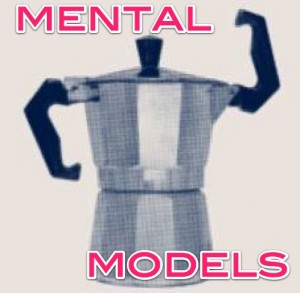 How do we free ourselves of mental models to get to our goal of breakthrough? Dr. Domenico Lepore, international expert in systemic management, continues his series on the Thinking Process Tools from the Theory of Constraints.
How do we free ourselves of mental models to get to our goal of breakthrough? Dr. Domenico Lepore, international expert in systemic management, continues his series on the Thinking Process Tools from the Theory of Constraints.
In our previous post we summarized how we build the Core Conflict in an organization. (See How Control Vs. Vision Leads to Breakthrough with the Core Conflict Cloud). How does that help us achieve breakthrough?
Remember, the conflict cloud helps to sharpen our intuition. In just a few days a group of managers that builds a Core Conflict Cloud together has moved from an often disparate set of non-verbalized hunches to a clear cut picture of the forces that keep them from achieving their goal. Moreover, a precise description of the needs that craft the psyche of the organization goes a long way towards helping to understand the “why” we are trapped in this conflict, the reason for it. I can safely say that no top management strategic retreat session delivers a tangible and operational output like this one. Now that the intuition is strong, we can make it even stronger.
Challenging Mental Models
What transforms a Core Conflict into a full-blown picture of our current reality is a disciplined, orderly elucidation of all the mental models that give birth to the conflict. These mental models are deeply rooted images that we have of ourselves and the world around us. These mental models, which we may also call “assumptions”, are the cognitive lenses through which we perceive reality.
Assumptions are, like any other mental construction, the result of external (the environment, education, experiences, values, etc.) and internal (the chemistry and physics of our mind) factors. The difference between an assumption and a statement of reality is only the realm of validity, determined often by cultural circumstances. If you want a practical example of this last statement, take a sentence like “in a democracy every citizen is entitled to decent, affordable and reliable healthcare” and ask for a comment from a statistically representative sample of individuals in the US, Canada, and Europe.
Assumptions are the logical connectors between goal, needs and wants; they help us see the logic that shapes the conflict. A conflict with its set of clearly verbalized assumptions portrays the current reality precisely in the way we experience it and is the strongest possible support we can provide to our intuition.
Freeing ourselves of cognitive constraints and getting to the goal
Addressing and overcoming the restraints we experience, the cognitive constraints that limit our existence, is emotionally burdensome. However, it is ultimately rewarding. If the core conflict addresses the intuition, how about making understanding and knowledge equally stronger?
As we said, assumptions are mental models we have about the world; they are formed as a result of experiences and socio-cultural circumstances. Assumptions are, in every respect, a reality for the person that develops them. These assumptions, particularly the ones that we verbalize between D and D’ (see diagram in previous post) in the conflict cloud are, de facto, the constraining element of our reality; they are our cognitive constraint.
If these constraining beliefs were challenged and invalidated, i.e. we were to identify logical statements that would disprove them, then these “constraints” would be “removed”. As a result of this removal (the lingo is: “elevation”) of the constraint, our ability to achieve our goal would be magnified. In order to qualify as “assumption sweepers” these logical statements disproving our assumptions must fulfill two prerequisites:
1) they must logically invalidate one or more assumptions;
2) they must protect/address both needs OR one of them and be neutral to the other.
Indeed, the totality of these statements must address/protect both needs. If these prerequisites are satisfied, we call these statements “injections”. The need for control (B) and the need for vision (C) are captured by the two statements: on one side the “vision” of a company that can overcome with ease the limitations they clearly see as artificial, on the other the “controlling” need for remaining as faithful as possible to the perception they have of themselves professionally and otherwise.
Injections are solutions to the conflict; by invalidating all the assumptions they “evaporate” (nothing like jargon, eh?) the conflict cloud (D and D’ disappear) and can potentially move us from our Current Reality to a more desirable, less constraining Future Reality.
At this point, something is still missing for a robust solution, and we will look at that in the next post.
See also:
Our Education Modules to learn these Tools.





Leave a Reply